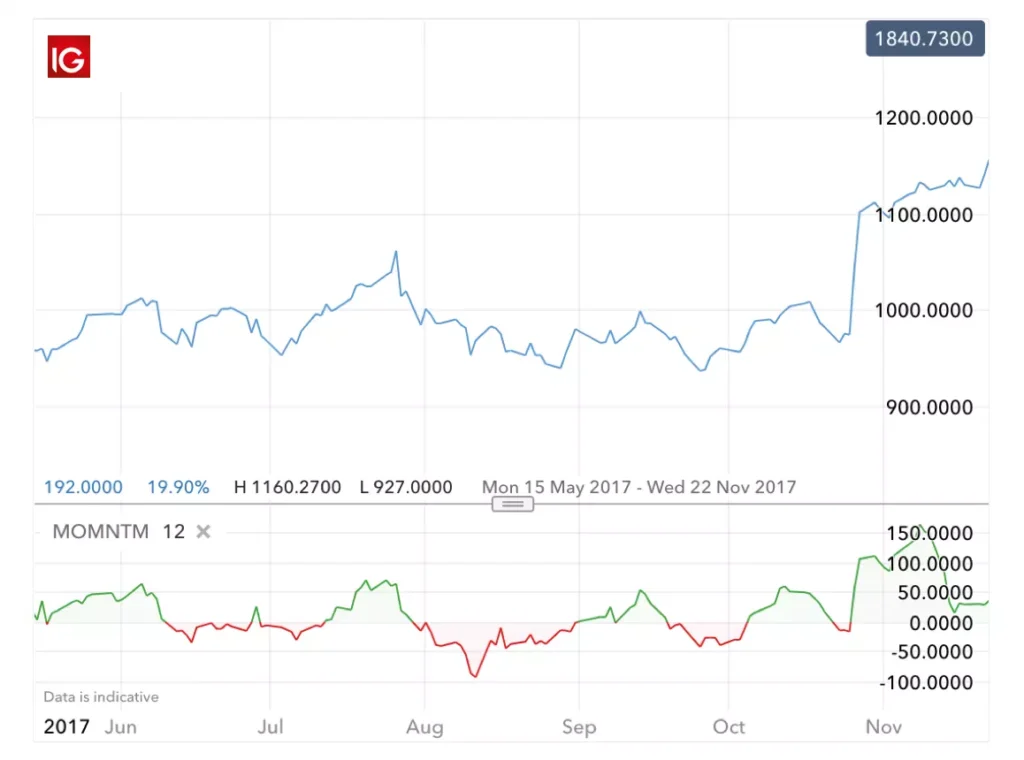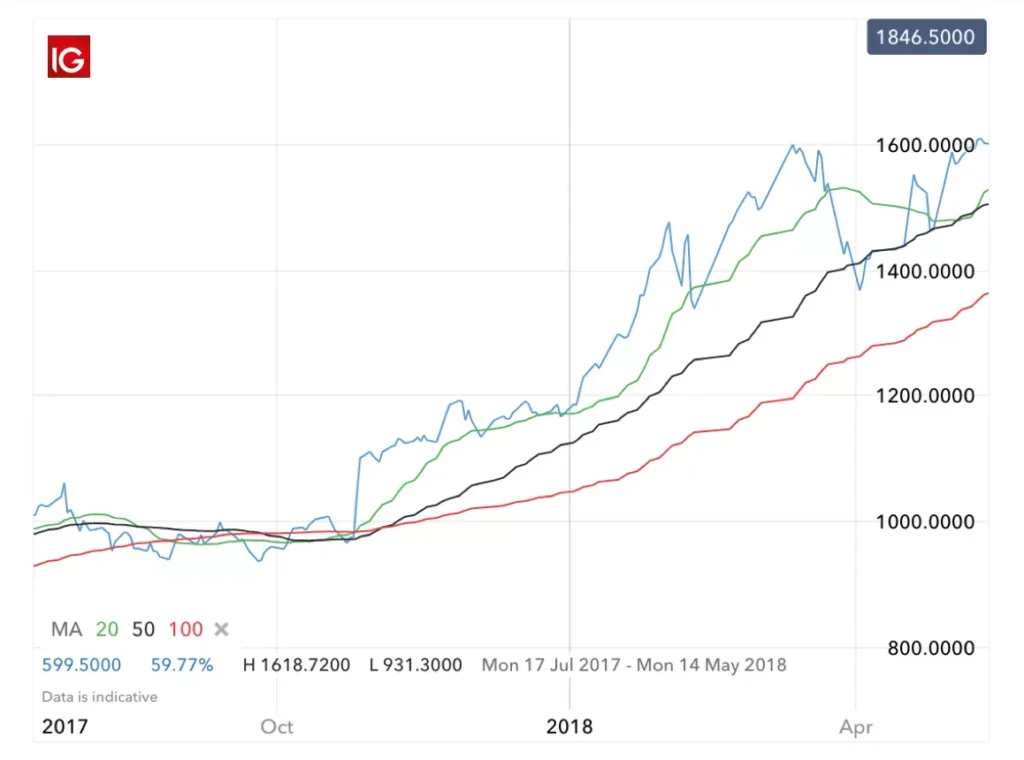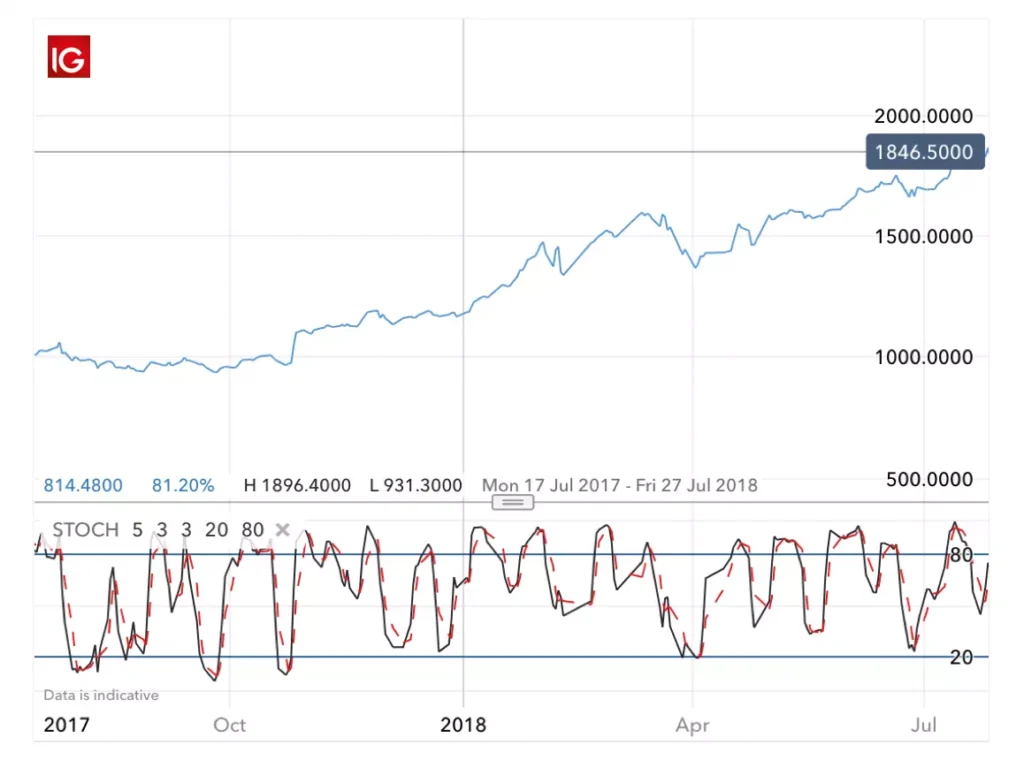Introduction to Momentum Trading Strategies
The Forex market is known for its dynamism and the multitude of strategies that traders employ to gain an edge. One such strategy that has gained popularity is Momentum Trading. In this article, we will delve into the world of Momentum Trading Strategies in Forex, exploring the importance of momentum indicators, real-life case studies, and techniques to master this trading approach.
Understanding Momentum in Forex Trading
Momentum, in the context of Forex trading, is akin to a compass that helps traders navigate the ever-changing financial markets. It’s a measure of the rate of change in the price of a currency pair, revealing the strength and vigor of a prevailing trend. This concept lies at the heart of technical analysis, and for good reason.
At its core, momentum is quantified through a variety of indicators, each offering a unique perspective on price dynamics. These indicators often crunch historical price data, meticulously analyzing the closing prices of a currency pair over a defined time frame. This analytical process isn’t just about crunching numbers; it’s about deciphering the intricate dance of market forces.
The underlying principle is both elegant and powerful: strong momentum often suggests that an ongoing trend is robust and likely to persist. Conversely, weak momentum can signal the possibility of a trend reversal, a potential turning point in the market’s journey.
But what fuels momentum? It’s not a solitary force but rather a symphony of influences. Economic events play a significant role; the release of critical economic data can send shockwaves through the Forex market, igniting or quelling momentum with each announcement. Market sentiment, shaped by news, politics, and global events, can tip the scales of momentum in an instant. It’s a reflection of market psychology, a collective mood that can sway the fate of currencies.
In essence, understanding momentum is about deciphering the heartbeat of the Forex market. It’s about interpreting the rhythm of price movements, identifying the pulse of trends, and recognizing the echoes of economic and psychological factors. It’s a skill that every Forex trader must cultivate, for it holds the key to uncovering potential buying and selling opportunities in the tumultuous world of currency trading.
Key Momentum Indicators in Forex
Unlocking the power of momentum in Forex trading requires the right tools, and in this realm, momentum indicators shine as guiding beacons. These specialized indicators help traders navigate the intricacies of price movement, offering valuable insights into potential trend changes and entry/exit points. Let’s delve into three of the most renowned momentum indicators that have earned their stripes in the Forex arena:
1. Relative Strength Index (RSI)

The Relative Strength Index, or RSI, is akin to the Forex market’s heartbeat monitor. It measures not only the pace of price movements but also their direction. Operating on a scale from 0 to 100, this indicator is a favorite among traders for its ability to uncover overbought and oversold conditions.
When RSI climbs above the 70 mark, it’s often viewed as a potential sell signal, signaling that the asset may be overextended. Conversely, an RSI below 30 may be seen as a signal to buy, suggesting that the asset could be undervalued. RSI is a versatile tool that can serve as a compass for traders seeking direction in the Forex wilderness.
2. Moving Average Convergence Divergence (MACD)

The MACD indicator is the chameleon of momentum tools, capable of adapting to various trading scenarios. At its core, MACD illuminates the relationship between two moving averages of an asset’s price. It consists of two vital components: the MACD line and the signal line. Traders keep a watchful eye on the interplay between these lines, seeking crossovers and divergences as their trading signals.
When the MACD line crosses above the signal line, it can signify a potential buy signal, suggesting upward momentum. Conversely, a crossover where the MACD line dips below the signal line may serve as a sell signal, hinting at a shift in momentum. MACD’s adaptability and ability to detect subtle changes make it a cornerstone of many traders’ strategies.
3. Stochastic Oscillator

The Stochastic Oscillator is like a seasoned detective, scrutinizing a security’s closing price within a specified time frame and comparing it to the price range over that period. This oscillator has two key lines: %K and %D, working in tandem to offer valuable insights. Traders keep a close watch on crossovers between these lines, as they can signify potential entry and exit points.
Additionally, the Stochastic Oscillator is adept at uncovering overbought and oversold conditions, where values above 80 may indicate overbought levels, potentially signaling a bearish reversal, while values below 20 may suggest oversold conditions and a potential bullish reversal. With its keen eye for subtleties, the Stochastic Oscillator is a trusted ally for traders seeking momentum-based opportunities in Forex.
These momentum indicators aren’t just tools; they’re the compass, the chameleon, and the detective of the Forex trading world. They empower traders with the ability to decipher market nuances, spot potential trend shifts, and uncover moments of opportunity in the dynamic Forex landscape. Understanding how to wield these indicators effectively can be the key to unlocking the potential of momentum trading strategies.
Developing a Momentum Trading Strategy
Embarking on a successful journey with momentum trading strategies requires a well-thought-out plan and a strategic approach. Here’s a roadmap to guide you in crafting your momentum-based trading strategy:
- Selecting Indicators: The first crucial step is to choose the right momentum indicators that align with your specific trading goals and trading style. As mentioned earlier, popular indicators like RSI, MACD, and the Stochastic Oscillator offer different perspectives on momentum. Consider which indicators resonate best with your trading philosophy.
- Setting Parameters: Once you’ve chosen your indicators, it’s time to set their parameters. For instance, if you’re using the RSI, you’ll need to define the look-back period that suits your trading style. This period determines the number of previous price bars considered when calculating the RSI. Fine-tuning these parameters is essential to tailor the indicators to your preferred timeframes and trading preferences.
- Identifying Trends: Momentum trading hinges on identifying trends in the market. Your selected momentum indicators will play a pivotal role in assessing the direction of these trends. Look for strong indications of bullish or bearish momentum to determine the trend’s strength and potential longevity.
- Entry and Exit Points: Momentum indicators shine when it comes to identifying favorable entry and exit points. Leveraging the insights provided by these indicators, you can pinpoint moments when market momentum aligns with your trading strategy. For example, an RSI reading above 70 might suggest a potential overbought condition, signaling a good time to consider an exit or short position. Conversely, an RSI reading below 30 could indicate an oversold condition, signaling a potential entry or long position. Utilize these momentum-driven entry and exit signals to your advantage.
- Risk Management: No trading strategy is complete without robust risk management techniques. Momentum trading is no exception. To safeguard your capital, implement risk management measures such as setting stop-loss and take-profit levels. These levels should be based on your analysis and risk tolerance. They act as safety nets, ensuring that your losses are controlled while allowing your profits to run.
- Combining with Other Analysis Tools: Momentum indicators are powerful, but they become even more potent when combined with other technical analysis tools. Incorporate trendlines, moving averages, and support and resistance levels into your strategy. These complementary tools can enhance the accuracy of your trading signals and provide additional confirmation of market direction.
Remember that developing a momentum trading strategy is an iterative process. It involves continuous learning, adjustment, and refinement. As you gain experience, you’ll fine-tune your strategy to align more closely with your trading objectives. By blending the strengths of momentum indicators with other analysis techniques, you can craft a strategy that maximizes your potential for success in the dynamic world of Forex trading.
Case Studies: Successful Momentum Trades in Forex
The true litmus test of any trading strategy lies in its real-world application and the tangible results it delivers. To appreciate the potency of momentum trading strategies, let’s delve into a couple of illustrative case studies where traders harnessed momentum to achieve profitable outcomes:
Case Study 1: EUR/USD Breakout
In this scenario, the EUR/USD currency pair exhibited a compelling display of strong bullish momentum. The Relative Strength Index (RSI) had surged above the critical 70-level threshold, signaling overbought conditions. Savvy traders promptly recognized this as a prime opportunity to act. Capitalizing on their understanding of momentum trading, they made the strategic decision to short the EUR/USD pair. As anticipated, the price embarked on a corrective move, validating their momentum-driven analysis. The result? A fruitful and profitable trade that exemplified the efficacy of momentum strategies.
Case Study 2: GBP/JPY Trend Continuation
Our second case study casts the spotlight on the GBP/JPY currency pair, where traders discerned a robust uptrend in the making. Their analysis was fueled by an amalgamation of signals from the Moving Average Convergence Divergence (MACD) and Stochastic Oscillator.
These momentum indicators collaboratively echoed the prevailing bullish sentiment. Equipped with the knowledge of momentum trading, traders seized the moment and ventured into the trade with precision. They artfully rode the ascending wave of momentum, allowing them to capture substantial gains along the way. This case study underscores the significance of comprehending momentum indicators and their invaluable role in shaping astute trading decisions.
These real-world examples serve as compelling testimonials to the power of momentum trading strategies. They underscore the pivotal role of momentum indicators in guiding traders toward opportune moments to buy or sell. These case studies also underscore the importance of prudent risk management practices, as successful momentum trading extends beyond simply identifying momentum; it’s about executing well-informed and disciplined trades.
By absorbing the lessons from these cases, traders can deepen their appreciation for momentum indicators’ nuanced signals and their ability to shape confident and profitable trading decisions in the dynamic Forex market.
Challenges and Limitations of Momentum Trading
Amidst the allure of potentially lucrative momentum trading strategies, it’s imperative for traders to maintain a grounded perspective by acknowledging the challenges and limitations that come hand in hand with this approach. By navigating these hurdles with astuteness, traders can unlock the full potential of momentum trading while minimizing associated risks.
- False Signals:
- Challenge: Momentum indicators, while powerful, are not infallible. They can generate false signals that may mislead traders into making ill-timed decisions, leading to losses.
- Mitigation: Prudent traders employ a critical eye and cross-check signals from multiple momentum indicators. Additionally, they often require confirmation from other technical analysis tools before committing to a trade. This cautious approach helps sift out false signals and reduces their impact on trading outcomes.
- Volatility:
- Challenge: Market volatility, characterized by rapid and unpredictable price fluctuations, can inject a dose of unpredictability into momentum signals. Sudden market swings may trigger erratic momentum readings.
- Mitigation: Risk management plays a pivotal role here. Traders must set appropriate stop-loss levels to limit potential losses in the face of heightened volatility. Additionally, they might consider widening stop-loss parameters to accommodate market fluctuations while staying within their risk tolerance.
- Market Noise:
- Challenge: Short-term price movements and market noise, often stemming from intraday trading activity or economic announcements, can inject random fluctuations that distort momentum readings.
- Mitigation: To overcome this challenge, traders often resort to longer timeframes when analyzing momentum. By focusing on more extended periods, they can filter out the noise and attain a clearer perspective of the overarching momentum trends. This, coupled with other technical analysis tools, helps in deciphering the true momentum signals amidst the cacophony of market noise.
Navigating these challenges underscores the importance of discipline, risk management, and adaptability in momentum trading. Traders who recognize the potential pitfalls and employ strategies to mitigate them are better poised to harness the power of momentum trading while safeguarding their capital. As in any trading endeavor, a well-rounded approach, honed through experience and continuous learning, can help traders overcome these hurdles and achieve success in the dynamic Forex market.
Integrating Technology and Tools for Momentum Trading
In the ever-evolving landscape of Forex trading, staying ahead of the curve often requires harnessing the power of technology and tools. Momentum traders, in particular, benefit immensely from cutting-edge solutions that facilitate the swift and efficient execution of their strategies. Here, we delve into the pivotal role that technology plays in shaping momentum trading and explore the tools that empower traders in this dynamic field.
- Automated Trading Systems:
- Efficiency at Its Best: Momentum trading hinges on timely and precise execution. Automated trading systems, equipped with algorithms tailored to capture momentum signals, are designed to execute trades swiftly and accurately. These systems can analyze multiple momentum indicators simultaneously, providing traders with an edge in capturing opportunities as they arise.
- Real-Time Analysis: Momentum traders rely on real-time data to make split-second decisions. Automated systems process market data instantaneously, ensuring that traders have access to the most up-to-date information. This agility allows for timely entries and exits, essential in momentum trading where every moment counts.
- Real-Time Market Data:
- Timely Insights: Momentum traders thrive on the latest market data. Advanced technology provides real-time updates on currency pairs, allowing traders to react promptly to shifting conditions. Whether it’s a sudden surge in momentum or a reversal, having immediate access to market data empowers traders to make informed choices.
- Customizable Alerts: Many trading platforms and tools offer customizable alerts based on momentum indicators. Traders can set specific parameters and receive alerts when momentum conditions align with their criteria. This feature enables traders to stay vigilant even when away from their trading screens.
- Risk Management Tools:
- Preserving Capital: Momentum trading carries inherent risks, and risk management is paramount. Technology has given rise to advanced risk management tools that assist traders in setting stop-loss and take-profit orders. These tools help traders safeguard their capital by defining predetermined exit points, minimizing potential losses.
- Position Sizing Calculators: Calculating position sizes in accordance with risk tolerance and market conditions is simplified through technology. Position sizing calculators take into account variables such as stop-loss levels and account size, enabling traders to determine appropriate trade sizes that align with their risk management strategy.
- Trading Algorithms:
- Algorithmic Trading: Algorithmic trading strategies, designed for momentum trading, offer a systematic and disciplined approach. These algorithms continuously monitor momentum indicators and execute trades based on predefined criteria. This hands-free approach allows traders to maintain discipline in executing their momentum strategies.
- Backtesting Capabilities: Many algorithmic trading platforms provide backtesting capabilities. Traders can analyze the historical performance of their momentum strategies using past market data. This aids in refining strategies and gaining confidence in their effectiveness.
In conclusion, the integration of technology and advanced tools has ushered in a new era of momentum trading. Traders who leverage these resources gain a competitive edge by executing trades swiftly, managing risk effectively, and staying attuned to real-time market dynamics. The dynamic nature of Forex markets demands adaptability, and technology equips momentum traders with the agility and insights needed to thrive in this fast-paced arena. As technology continues to advance, the future holds even greater potential for innovation in momentum trading.
Conclusion
Momentum Trading Strategies in Forex are a valuable addition to any trader’s toolkit. Understanding momentum indicators like RSI, MACD, and Stochastic Oscillator is key to making informed trading decisions. By combining these indicators with other analysis tools and learning from real-life case studies, traders can harness the power of momentum to achieve success in the dynamic world of Forex trading.
Incorporate momentum trading into your strategy, adapt to market conditions, and continue learning. With the right approach, momentum trading can be a powerful ally in your Forex journey.
Click here to read our latest article on Donchian Channels in Forex Trading
FAQs
- What is Momentum Trading in Forex? Momentum trading in Forex involves capitalizing on the rate of change in currency pair prices. It focuses on identifying and following trends to make profitable trades.
- How are Momentum Indicators Used in Forex Trading? Momentum indicators like RSI, MACD, and Stochastic Oscillator are employed to gauge the strength of trends and identify potential buying or selling opportunities.
- Can You Explain the RSI Momentum Indicator? The Relative Strength Index (RSI) measures the speed and change of price movements. It ranges from 0 to 100 and helps identify overbought and oversold conditions.
- What is the Role of Moving Average Convergence Divergence (MACD) in Momentum Trading? MACD is a versatile indicator that displays the relationship between two moving averages. Traders use MACD line crossovers and divergences to make trading decisions.
- How Does the Stochastic Oscillator Work in Momentum Trading? The Stochastic Oscillator compares a currency pair’s closing price to its price range over a specific period. It helps traders identify potential reversal points and overbought/oversold conditions.
- What Steps are Involved in Developing a Momentum Trading Strategy? Building a momentum-based strategy includes selecting indicators, setting parameters, identifying trends, determining entry and exit points, and implementing risk management techniques.
- What Are Some Real-Life Examples of Successful Momentum Trades in Forex? Two case studies highlight successful momentum trading: shorting EUR/USD during overbought conditions and riding the uptrend in GBP/JPY using MACD and Stochastic Oscillator signals.
- What Are the Challenges of Momentum Trading in Forex? Challenges include false signals, high volatility, and market noise. Traders should employ risk management and adapt strategies to mitigate these challenges.
- How Does Technology Aid Momentum Traders? Technology offers automated trading systems, real-time market data, risk management tools, and algorithmic trading, enhancing the efficiency and effectiveness of momentum trading.
- What Role Does Risk Management Play in Momentum Trading? Risk management is crucial in momentum trading to protect capital. Traders should set stop-loss and take-profit levels and calculate position sizes based on risk tolerance and market conditions.
Click here to learn more about Momentum Trading Strategies

